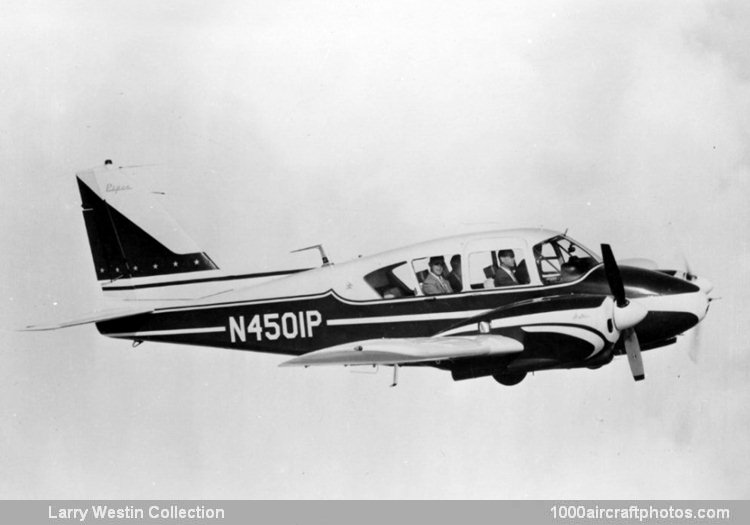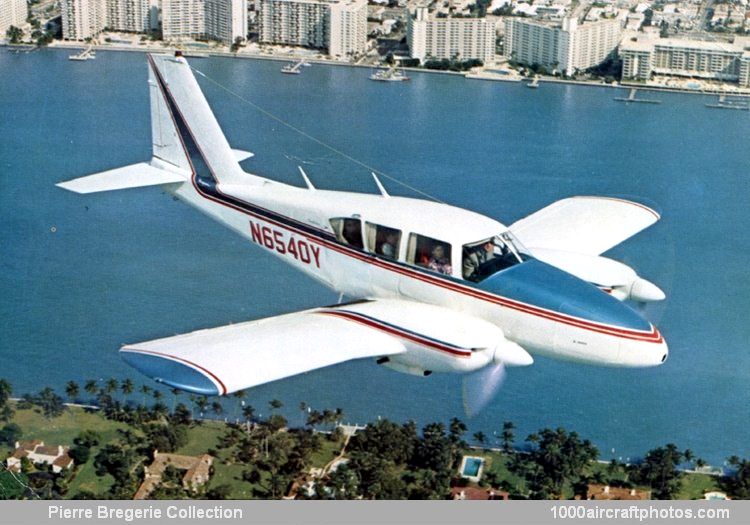02/28/2015. Remarks by Johan Visschedijk: "By putting 250 hp Lycoming O-540-AID engines onto the PA-23 Apache and modestly sweeping the vertical tail and changing the horizontal tail, Piper created the PA-23-250 Aztec. Although Piper initially allotted the designation PA-27 to the Aztec and the construction numbers use the serial 27, the type was certified under the Apache Type Certificate 1A10 and hence the official designation stayed as the PA-23. The prototype c/n 27-1 (registered N4250P) was produced by the experimental shop on October 17, 1958 and it was broken up in February 1959. FAA approval was granted in 1959 and first deliveries of this five-seater commenced with c/n 27-2 (N4500P) at the end of that year.
In 1960, Piper delivered 20 Aztecs to the USN under the designation UO-1. In the early 1960s, airplane c/n 27-49 (N4544P) was used to develop the de-icing option for the Aztec. Between February 27 and March 8, 1961 Max Conrad flew Aztec N4544P around the world, starting at Miami, Florida, in 8 days, 18 hours, 36 minutes doing 25,946 ml (41,756 km) at an average speed of 123.2 mph (198.3 kmh). He claimed an international Class C-I-d record for speed.
In 1961 the Aztec B was developed with a longer nose, six seats and modified instruments. The prototype c/n 27-2000 (N5000Y) first flew in September 1961 and deliveries commenced with c/n 27-2001 (N5001Y) completed on January 13, 1962.
In late 1961 the Apache 235 was developed, using the Aztec airframe with 235 hp Lycoming O-540-B1A5 engines. The test airplane was c/n 27-460 (N4914P) converted from a 250 hp version. The first production aircraft c/n 27-505 (N4915P) was completed on September 11, 1962 and continued in production in parallel to the 250 version until June 1966.
Between 1962 and 1964 the Aztec C was developed. Airplane N5000Y was used as the test airplane with Lycoming IO-540-C1B5 engines fitted on March 29, 1962. It was converted to an Aztec C on April 1, 1963. This version had an increase in useful load, revised landing gear, improved sound proofing and new interior styling and luxury. It was available with Lycoming IO-540-C4B5 engines or TIO-540-C1A turbocharged engines in "tiger shark" engine nacelles. The first production airplane c/n 27-2505 (N5427Y) was registered in 1964 for the 1965 model year.

